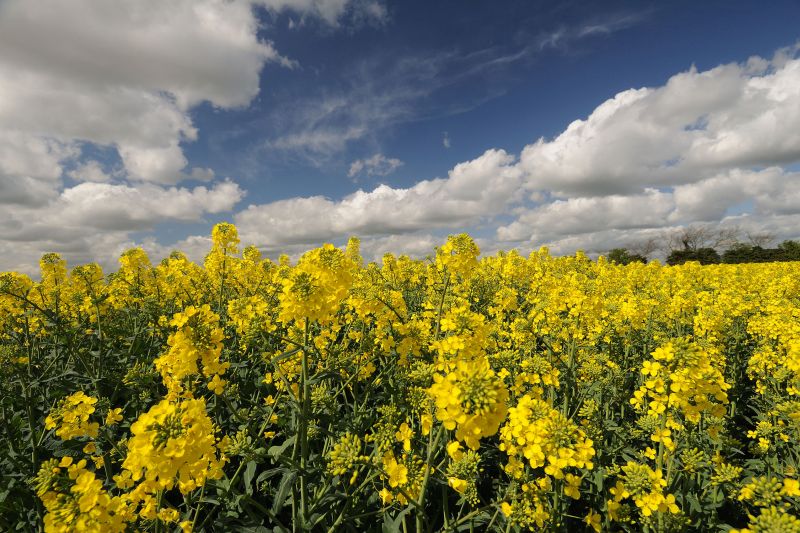
A new double action oilseed rape fungicide that provides outstanding control of disease on the leaf surface and targets infection within the plant now gives growers the chance to better protect green area and drive up yields. SYMETRA from Syngenta combines the highly potent and long lasting effects of isopyrazam (IZM), with the exceptional renowned strength of Amistar technology.
Designed specifically for application during the flowering period, the power of two actives in SYMETRA gives added efficacy against Sclerotinia and other late diseases, along with plant physiological benefits of enhanced green leaf protection. Retaining green leaf to capture more sunlight can increase seed pod fill and raise the oil content of seed.
Syngenta Oilseed Rape Technical Manager, James Evans, highlights that the two actives work in complementary ways to prevent disease. “The IZM binds strongly onto the leaf and stem wax and quickly accumulates into a protective layer. Any Sclerotinia pathogen landing on the treated plant is locked into by the active molecule. This double-binding capability makes IZM different to any other SDHI.
“And whilst IZM protects the plant on the outside of the leaf and stem, the Amistar technology is systemically taken up and protects the vascular tissue against disease active inside the plant. The internal protection of leaf cells is integral in maintaining green leaf structure and efficient photosynthetic activity.”
With disease protection locked onto the leaf, plant biokinetics studies have shown the new fungicide’s exceptional rainfastness - giving an added advantage in high-risk wet conditions. In a simulated rainfall trial of 20mm of rain falling within one hour after application, over 80% more SYMETRA active ingredient remained on the plant, compared to established boscalid or fluopyram formulations.
The results of extensive trials across Europe have recorded a 66% reduction in Sclerotinia infection of stems on average, with yield results showing a 0.45t/ha increase on average across the trials. The broad-spectrum disease activity of SYMETRA has also seen late-season Alternaria effects limited to just 4% of pods, compared to 27% of pods infected on the untreated crop.
“Application trials have demonstrated the best efficacy with SYMETRA treatments timed to coincide with the first petal fall,” advised Mr Evans, “typically when the crop is at 50% flowering.
“Additionally, when used as part of a two-spray programme with AMISTAR at early flowering, SYMETRA provides extended disease coverage which, coupled with the added physiological benefits of green leaf retention, allows the potential of crops to be really pushed.”
He added that the recent Syngenta developments in oilseed rape agronomy, including TOPREX to manage canopy size and shape and now SYMETRA to make the best use of the green leaf area, gives growers the chance to consistently achieve higher yields from the exceptional high yield potential of the company’s leading new hybrid variety, SY HARNAS.
